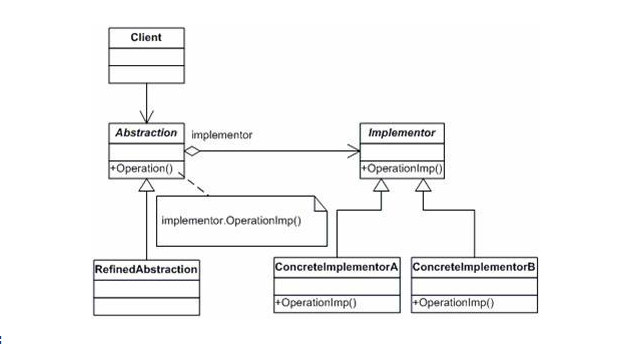定义:将抽象部分与实现部分分离,使它们都可以独立的变化。桥接模式的主要目的是将一个对象的变化因素抽象出来,不是通过类继承的方式来满足这个因素的变化,而是通过对象组合的方式来依赖因素的抽象,这样当依赖的因素的具体实现发生变化后,而我们的具体的引用却不用发生改变,因为我们的对象是依赖于抽象的,而不是具体的实现。
结构图:

1.创建桥接实现接口:
public interface DrawAPI { public void drawCircle(int radius, int x, int y); }
2.创建实现了 DrawAPI 接口的实体桥接实现类:
public class GreenCircle implements DrawAPI { public Override void drawCircle(int radius, int x, int y) { } }
3.使用 DrawAPI 接口创建抽象类 Shape:
public abstract class Shape { protected DrawAPI drawAPI; protected Shape(DrawAPI drawAPI) { this.drawAPI = drawAPI; } public abstract void draw(); }
4.创建实现了 Shape 接口的实体类:
public class Circle extends Shape { private int x, y, radius; public Circle(int x, int y, int radius, DrawAPI drawAPI) { super(drawAPI); this.x = x; this.y = y; this.radius = radius; } public void draw() { drawAPI.drawCircle(radius,x,y); } }